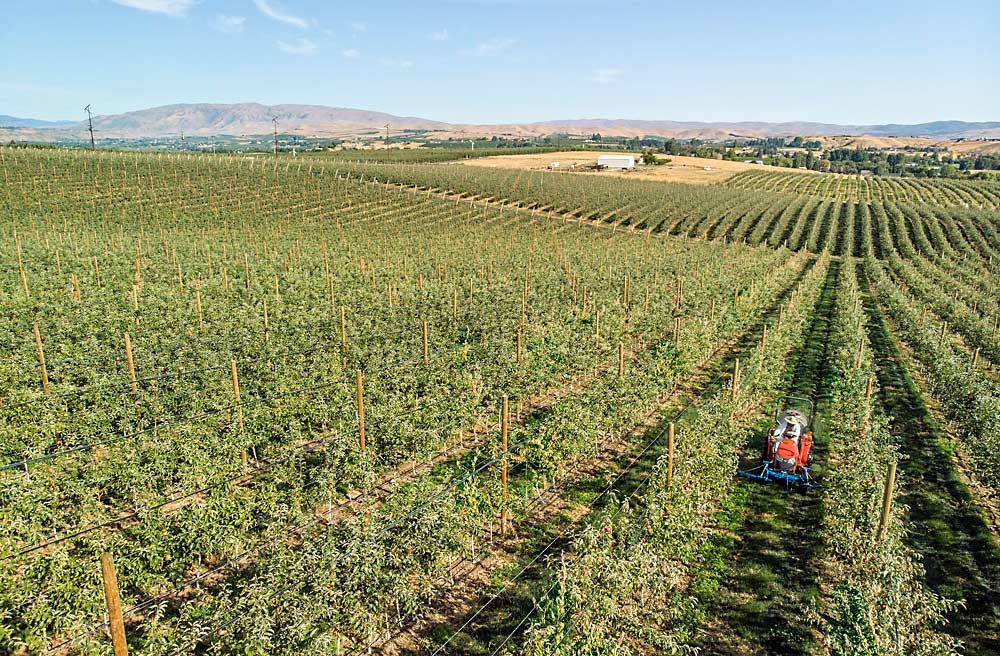
In a hilltop orchard overlooking Selah, Washington, an herbicide rig crept through rows of WA 38 apples ripening in the August sun, as Jerry Mertz and the rest of the state geared up for the first commercial harvest of the long-awaited variety.
All while having so much still to learn.
“It’s all an experiment,” said Mertz, an orchard manager for Monson Fruit Co.
After 20-plus years of breeding and almost $500 million of industry investment, Washington State University’s latest cultivar, to be sold as the Cosmic Crisp, is reaching packing houses for its first true market test. The industry is awash with a mixture of enthusiasm and questions.
“It’s a new world with that variety,” said Scott McDougall, president of McDougall & Sons in Wenatchee, Washington.
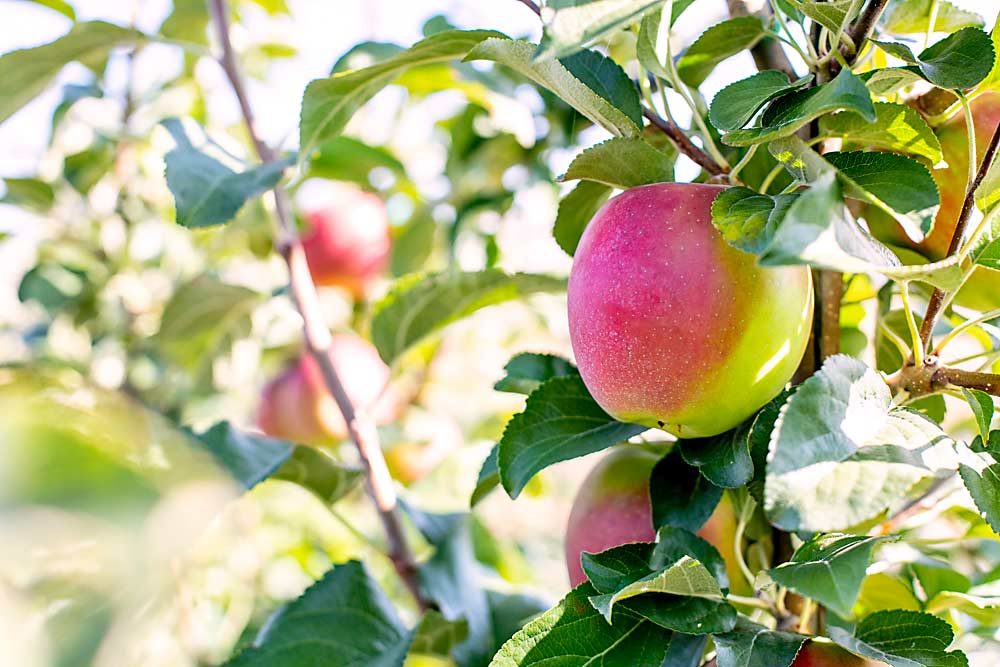
Proprietary Variety Management, contracted by the university to manage the rollout, expects growers to harvest 460,000 40-pound boxes of the WA 38 this year. That would immediately bump off Jonagold as the 10th largest public variety by volume in the state, according to statistics kept by the Washington State Tree Fruit Association.
The WA 38 is a licensed and managed variety, not a club variety; any grower in Washington may grow it. However, trees are only available through licensed nurseries participating in the Northwest Nursery Improvement Institute. Washington growers have at least a 10-year head start on any other producer in North America.
“I’m greatly encouraged about the advances and where we’re going with the fruit,” said Lynnell Brandt, president of Propriety Variety Management, or PVM. “We still have a lot to learn.”
Second leaf and third leaf
Almost two-thirds of this year’s WA 38 crop will come off second-leaf trees, just planted in 2018. That’s unusual, but the WA 38 grows aggressively. Some horticulturists even recommend cropping some in the second year just to slow vigor, prompting growers to find a balance between tree growth and fruit production.
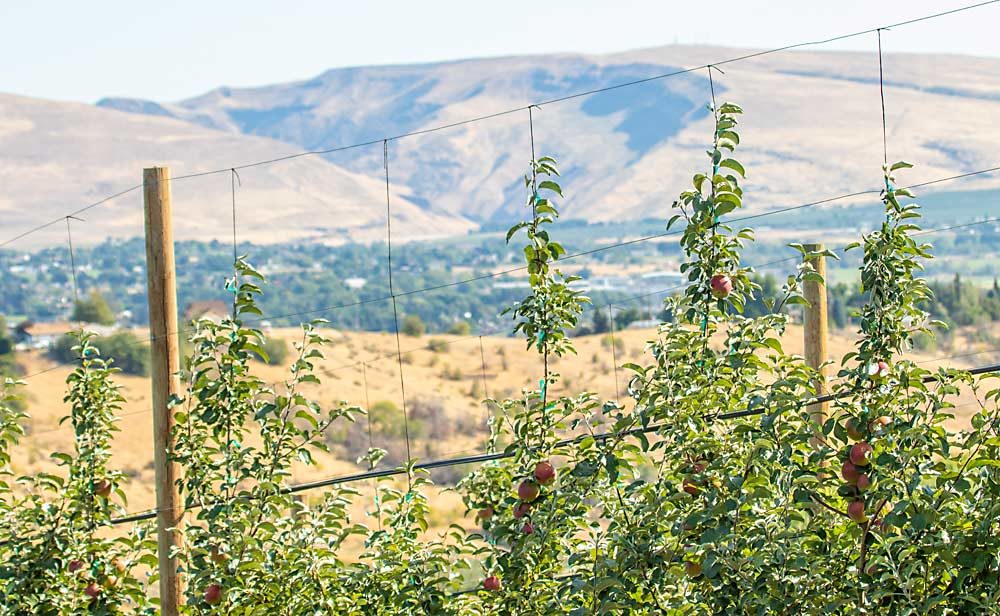
The second-leaf apples will outdistance this year’s third-leaf because of the sheer number of trees. (Plantings were available in 2017 to only a limited number of growers chosen in a statewide drawing.) By 2018, nurseries had boosted production tenfold, and growers in Washington planted 6 million WA 38 trees.
PVM will allow packers to ship third-leaf apples on Dec. 1 this year; second-leaf fruit will release on Jan. 1. Last year, PVM didn’t allow a commercial harvest of second-leaf trees, but tests have since shown that apples from younger trees will ripen well during storage. It’s one of many nuances the industry is still learning about the hyped variety.
“As we have more experience going forward, these expectations and release dates I expect may change,” Brandt said.
Monson Fruit plans to harvest about 130 acres of Cosmic Crisp this year, all but 20 from second-leaf trees at the company’s Lookout and Southern ranches near Selah. Most have not reached the top trellis wire, though Mertz expects them to produce at roughly 12 to 15 bins per acre.
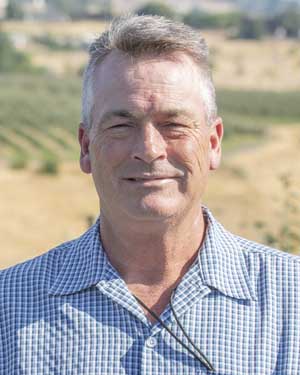
“I was surprised to have this much in some areas,” Mertz said.
Mertz, a 16-year veteran at Monson, and his crews used a central-leader vertical trellis system on a mixture of Geneva 41, Geneva 935 and Malling 9-Nic.29 rootstocks. The fruit helped mitigate vigor in the lower branches. He did not thin at all.
Careful prep work early is now paying off, he said. Last year, he and his team installed trellises, an irrigation pond, water lines and sprinklers before planting the trees by hand.
“We planted a row and I opened the valve, planted a row, opened a valve,” he said. “Instantly attached it to the wire and it made a big difference.” Windy weather would have ruined those young trees otherwise.
Still, he admitted his team is still experimenting. For example, he likes the strong growth from the Geneva rootstocks. The G.935 is more spindly and can throw more blind wood if not carefully tendered. The G.41 grows well, but his graft unions slipped in places. The Nic.29 was not as vigorous, but it produced more spurs and the fruit seemed to color sooner.
But that’s all from just two years of observation. “We’re trying to figure out what all is going on with this apple still and what roots work best,” he said.
Ditto, said McDougall, who is taking a more cautious approach and not harvesting from any second-leaf trees, which still have space to fill in his two-leader system.
“We’ll be learning every year,” he said.
McDougall expects only about five bins per acre this year from his third-leaf 2017 plantings on roughly 17 acres. He and his crews pruned for a conservative crop load, wanting to ensure the trees filled their canopy space before fruiting, which worked. Next year, he plans to use Apogee on his now 2-year-old trees to begin the process of encouraging a higher load for 2021.
McDougall planted more trees in 2018 and 2019, all on G.41 rootstocks in a two-leader tree system to spread the vigor between two branches.
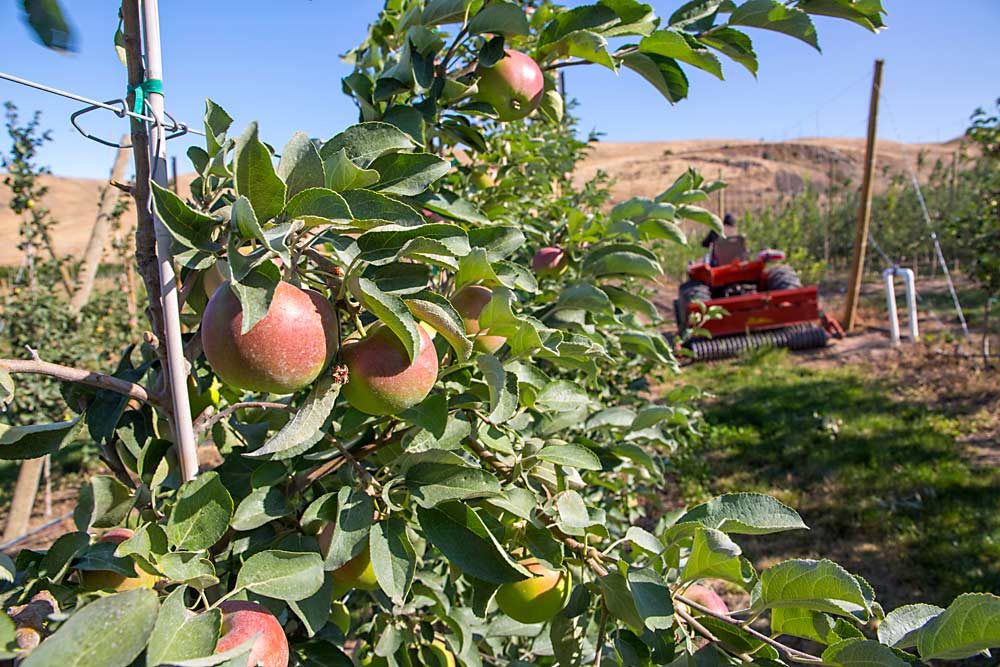
More on the way
Growers will have plenty of chances to experiment in the coming years, when volume levels soar. Next year, PVM expects just under 2 million boxes, about 5 million in 2021, 9.5 million in 2022 and 13.5 million in 2023. And those are conservative estimates, Brandt said.
In Andy Gale’s orchard in East Wenatchee, third-leaf WA 38s ripen on the east end of his block while crews prep the ground in newly planted rows on the west end. Gale expects between 30 and 35 bins per acre this year on about 12 acres. He added three more acres this year. All are on G.41 roots.
Other than a few Fujis, he now only grows the high-value varieties WA 38 and Honeycrisp, with some Ambrosia scheduled for planting next year.
He chose to train a modified central-leader tree architecture on vertical trellis. He defruited the trees completely last year, during the second leaf, and pruned short to prevent blind wood. He’s pretty happy with the results, he said.
“I feel pretty good about that. The trees have filled in very well,” he said.
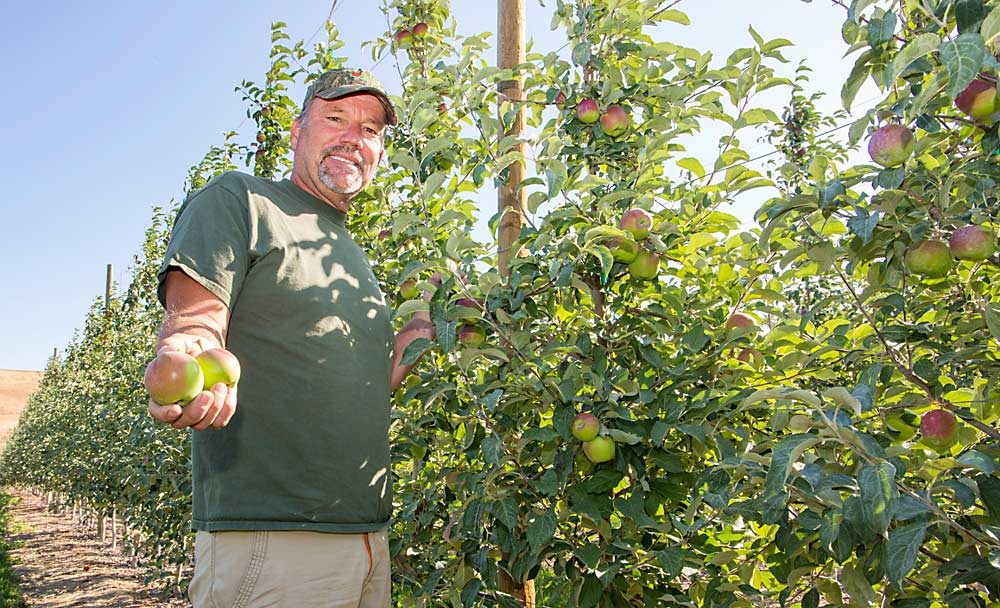
Washington Fruit and Produce Co. of Yakima expects to harvest about 1,000 bins this year, most of it from third-leaf blocks in Kittitas County yielding roughly 40 bins per acre, said Dan Plath, orchard manager. The company chose to remove fruit from all second-leaf blocks to maximize tree growth. The tree is indeed vigorous, but not as much as expected, Plath said. His horticulturists manage it similarly to a Fuji.
The company planted roughly 2,000 trees per acre with V-trellis training, mostly on M.9-T337 rootstocks, though they have experimented with some Genevas and will probably use more in the future, to take advantage of their fire blight resistance and replant tolerance, Plath said.
Volume now and in the future is always a big question with the Cosmic Crisp, giving Plath a mixture of excitement and nervousness.
“Next year will probably be fine, too, but you look at the volume expected in 2021 and it starts to get a little scary,” he said.
Washington Fruit intends to pace volume increases to keep its market share of Cosmic roughly the same as its share in the overall apple market.
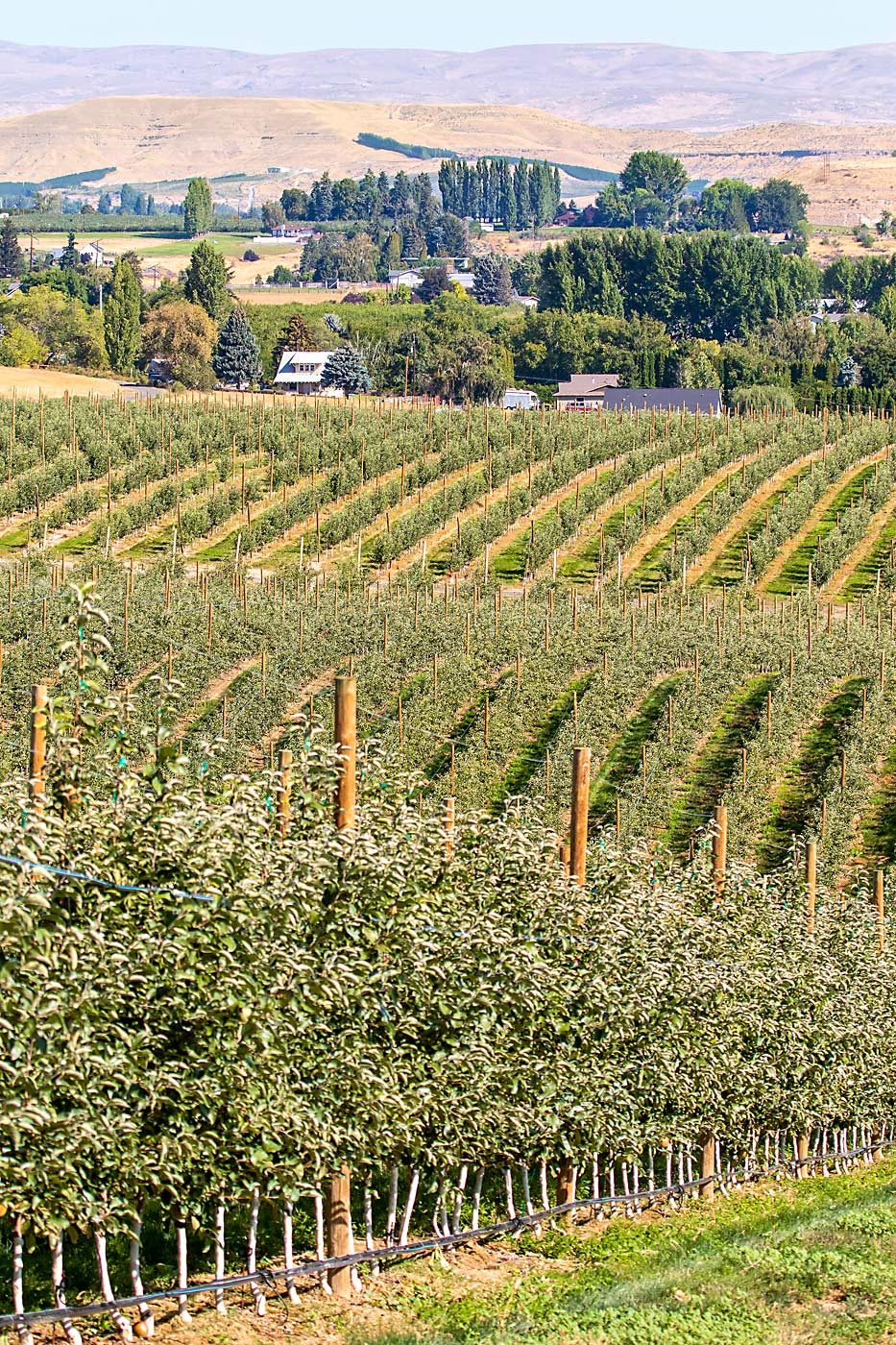
The harvest is exciting, but the industry really can’t wait until December when shoppers finally begin deciding the fruit’s fate, said Scot Hulbert, associate dean for research at WSU’s College of Agricultural, Human, and Natural Resource Sciences. The real proof might take even longer, he said, because one of the apple’s strengths is storability.
“I think they’re going to really like it after apples have been in storage for half a year,” Hulbert said. •
—by Ross Courtney






Leave A Comment